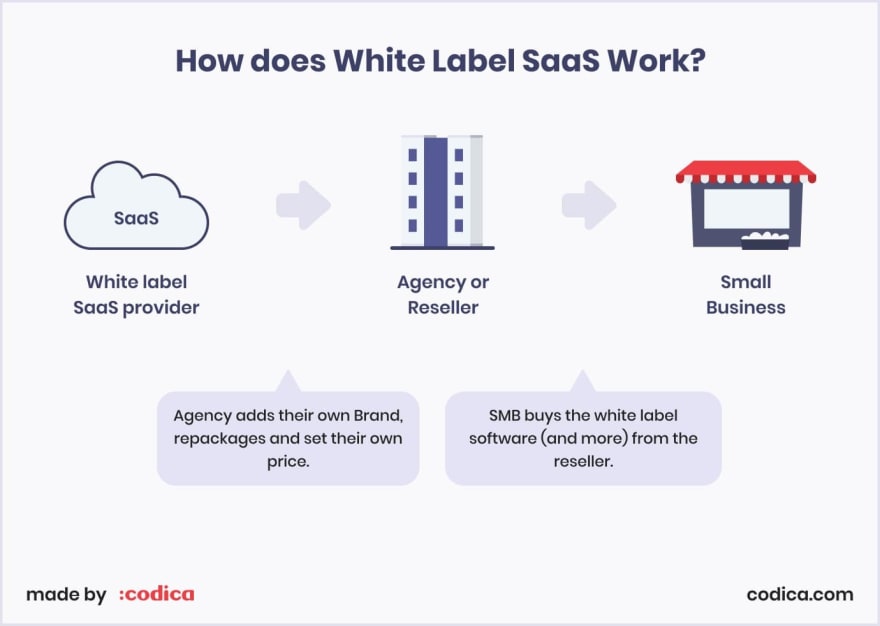This article was originally posted on Codica Blog.
According to the latest predictions by Gartner, the SaaS industry will generate $141 billion in 2022. Given these findings, it is not surprising that many businesses find the idea of building a SaaS application very lucrative.
To stay in the game, companies need to keep an eye on the latest SaaS app development trends. This way, they increase their chances of building a profitable software-as-a-service product.
So what future holds for the SaaS industry? Let’s find out.
The latest SaaS app development trends to watch in 2021
Artificial intelligence
Recently, artificial intelligence has become widespread more than ever. Today we can see many cases of its successful implementation into different kinds of businesses.
Artificial intelligence can automate repetitive tasks and support human capabilities. As a result, productivity and efficiency are increased significantly. It is one of the key reasons why AI is getting immensely popular these days.
So, where are artificial Intelligence methods used the most frequently? Basically, industries where AI is in high demand include social media, travel, education, and healthcare. The latter is considered one of the most prospective areas. Thus, the healthcare cloud computing market is predicted to reach $64.7 billion by 2025.
Further reading: 10 Best SaaS Startups in 2020-2021 for Your Inspiration
The rise of vertical SaaS
Strong demand for vertical SaaS products became another prominent SaaS trend. Such solutions are designed to solve a particular issue or meet a specific business need. That’s what makes them different from vertical SaaS products that serve customers across any domain or sector.
With this approach, you can improve customer retention by showing their niche expertise. Other benefits of vertical SaaS are lower customer acquisition costs and limited market spend.
When it comes to the future of the SaaS industry, it is heading towards a vertical approach. Today we can see more and more niche products launched for meeting the unique needs of particular industries.
Mobile-first approach
Recent research shows that 72.6% of mobile users, or nearly 3.6 billion people, will access the Internet via their mobile gadgets. Companies know that if they want to achieve great success, they need to operate in their customer environment. So they make the mobile-first design of their websites their top priority.
This trend is expanding to SaaS solutions as well. Therefore, if you want to launch a successful and profitable SaaS app, consider building a mobile version of your product. Trello, Jira, Dropbox, and Skype have already adopted the mobile-first approach and came up trumps.
You may find it interesting: What Does Progressive Web Apps (PWA) Development Mean? (Definition)
The growing popularity of micro-SaaS
Another way to offer a solution to a very specific business challenge is to launch a micro-SaaS product. In other words, you can build an add-on or extension to extend the functionality of other apps.
What makes micro-SaaS products so sought-after? First, by adopting this approach, businesses can find their unique niche in the crowded market. Besides, building a micro-SaaS app requires less time and resources. As a result, you can launch it much faster than a full-fledged SaaS product.
It should be noted, though, that applying a micro-SaaS approach can be especially beneficial for specific areas. These are content creation, personnel administration, preparing bills and invoices. For these sectors, micro-SaaS can become a real gold mine.
Switching from SaaS to PaaS
Today we witness high competition in the SaaS market. Under these conditions, companies are forced to find new ways to retain their customers. In this regard, migration from SaaS to PaaS model became a widespread tendency. This trend is proved by Statista predicting that the PaaS market will reach near $60 billion in revenue by 2022.
The launch of custom applications as add-ons to the initial products helps companies hold a strong market share in their niche.
Further reading: Saas vs PaaS vs IaaS: Choosing the Best Cloud Computing Model
White-label products
White-labeling is another SaaS trend you should not ignore in 2021. With this model, startups and small businesses can quickly enter the market. Besides, they are free from the hassle that comes with SaaS app development. So let’s take a closer look at while-labeling SaaS products.
Basically, suppliers develop software that is further rebranded and resold by other businesses. These products are fully customizable to give businesses a native look.
Source: Email Vendor Selection
So what makes white labeling SaaS products so popular these days? First, with this model, you can save time and money since you no longer need to build SaaS products from scratch.
Also, while-labeling allows you to increase the scope of your offering. As a result, you get a great opportunity to retain old customers and attract new ones.
Finally, you can offer a reliable cloud solution even without experience in SaaS product development.
The future of the SaaS industry
As you can see, the future of the SaaS domain looks very promising. A window of opportunities is open before entrepreneurs. All they have to do is to keep track of the latest SaaS trends to stay relevant.
Speaking about the recent trends, we should mention niche market targeting. Such a change of focus can be explained by the growing popularity of micro-SaaS and vertical SaaS.
Artificial intelligence and white-labeling help companies offer more complex and personalized products. Finally, a mobile-first approach becomes a must for businesses wanting to engage as many mobile users as they can.
We hope that the SaaS trends discussed in this article will help you stay ahead of the game and gain a competitive advantage. If you have a SaaS idea in mind and need professional advice, feel free to contact us. Codica team will eagerly take up your project.
To learn more about the latest SaaS trends, check our full article The Future of SaaS: Top SaaS App Development Trends for 2021.




Top comments (0)